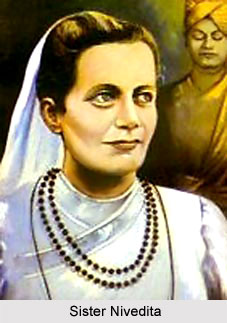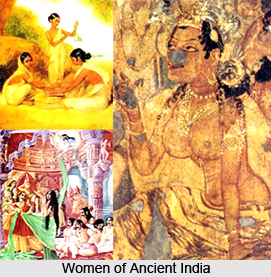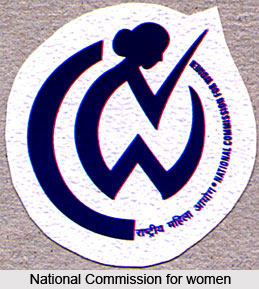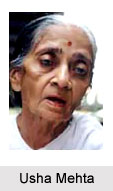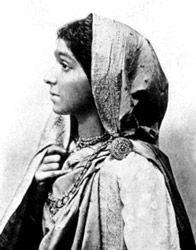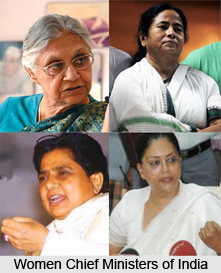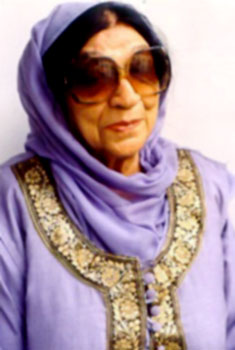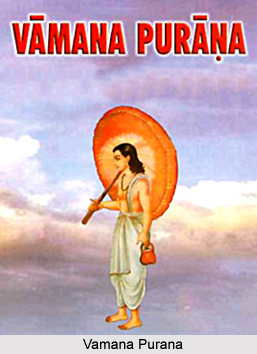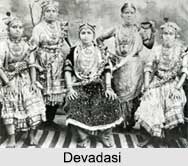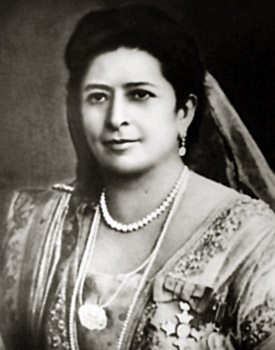 The National Council of Women in India was formed in 1925 as a national branch of the International Council of Women. Mehribai Tata (wife of Sir Dorab Tata), chair of the Executive Committee of the Bombay Council in its first year, played a key role in its advancement. During a trip to Europe in 1904, Lady Tata saw and greatly admired the commitment of English women to civic issues. She was opposed to passive charity and urged the middle class women to get actively involved in charity work such as visiting slums etc. In her view, Purdah system, caste differences, and lack of education prevented women from working to change social conditions. As a necessary first step, she urged men to support female education and freedom of movement for women.
The National Council of Women in India was formed in 1925 as a national branch of the International Council of Women. Mehribai Tata (wife of Sir Dorab Tata), chair of the Executive Committee of the Bombay Council in its first year, played a key role in its advancement. During a trip to Europe in 1904, Lady Tata saw and greatly admired the commitment of English women to civic issues. She was opposed to passive charity and urged the middle class women to get actively involved in charity work such as visiting slums etc. In her view, Purdah system, caste differences, and lack of education prevented women from working to change social conditions. As a necessary first step, she urged men to support female education and freedom of movement for women.
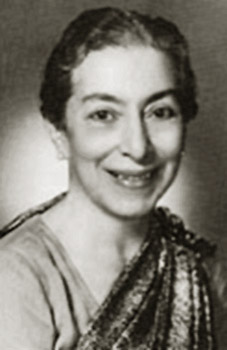 Most of the women who followed the example of Lady Tata were married to wealthy men involved in industry and banking. Just as these men supported charities and made donations that would please their rulers, so these newly emancipated women engaged in public activities that would be seen as "enlightened" by British officials in India and policy-makers in England. The philanthropic style that was being followed by these women was that of upper-class English women. When it was first organized the National Council had three life patrons- the Dowager Begum Saheb of Bhopal, Maharani Saheb of Baroda and Lady Dorab Tata. The president was the Maharani of Baroda. The Maharani continued to serve the organization as president in 1928, 1930-4, and 1936-7. From 1938 to 1944 the Maharani Setu Parvati Bayi of Travancore was president. Other women who held important positions on the executive committee included Lady Dorab Tata, Miss Cornelia Sorabji, India`s first lady barrister, Mrs. Tarabai Premchand, the wife of a wealthy banker, Mrs. Shaffi Tyabji, a member of one of Mumbai`s leading Muslim families, and Maharani Sucharu Devi of Mourbhanj, daughter of Keshab Chandra Sen.
Most of the women who followed the example of Lady Tata were married to wealthy men involved in industry and banking. Just as these men supported charities and made donations that would please their rulers, so these newly emancipated women engaged in public activities that would be seen as "enlightened" by British officials in India and policy-makers in England. The philanthropic style that was being followed by these women was that of upper-class English women. When it was first organized the National Council had three life patrons- the Dowager Begum Saheb of Bhopal, Maharani Saheb of Baroda and Lady Dorab Tata. The president was the Maharani of Baroda. The Maharani continued to serve the organization as president in 1928, 1930-4, and 1936-7. From 1938 to 1944 the Maharani Setu Parvati Bayi of Travancore was president. Other women who held important positions on the executive committee included Lady Dorab Tata, Miss Cornelia Sorabji, India`s first lady barrister, Mrs. Tarabai Premchand, the wife of a wealthy banker, Mrs. Shaffi Tyabji, a member of one of Mumbai`s leading Muslim families, and Maharani Sucharu Devi of Mourbhanj, daughter of Keshab Chandra Sen.
To a great extent the works of the Council were determined by the interest of the individual members. Standing sectional committees were formed to deal with art, labour, legislation, and the press. Generally, the committees collected information, prepared memoranda, and presented these to the proper authorities. The committee on legislation to improve women`s status was the most active. This was partly because of the leadership of Mithan J. Lam, the first Indian woman to pass the bar exam and practice law in India, and partly because this was the kind of social work that could be carried out without the fear of losing status. Charitable schemes continued although the idea of visiting the slums and chawls (workers` quarters) never appealed to the members of the Council. The new arena of activity that interested these women was petition politics.
However, due to the elitist nature of the Council, it failed to grow and become a vital national organization. The annual membership fee was Rs.15, it took Rs 500 to become a life member and Rs.1,000 to become a patron. The members were all women of wealth and position, capable of affording the expensive travel expected of the Council`s leaders and with enough space to house the Council office. Many women simply could not afford to join this organization nor did they feel comfortable in the presence of these affluent and titled women. This was however not the only reason why the council did not take off. The councils were politically and socially conservative. Because of the connection with the British and the wealth and status of the leading members, the Council remained aloof from the struggle for independence. Socially they opted for the status quo.
Where their work was concerned, they looked to the government for the improvements they desired. They were confident that they understood both the problems of Indian women and the solutions to these problems and advised the government on welfare issues. They found this work agreeable and their contacts, established through family, marriage, and social interaction, gave them a credibility that exceeded their experience or numbers. However, fact was that they remained completely cut-off from the people they claimed to represent. Thus though the National Council of Women in India was founded keeping the people`s interest at heart, it failed to become truly representative of the people or emerge as a successful organisation.
